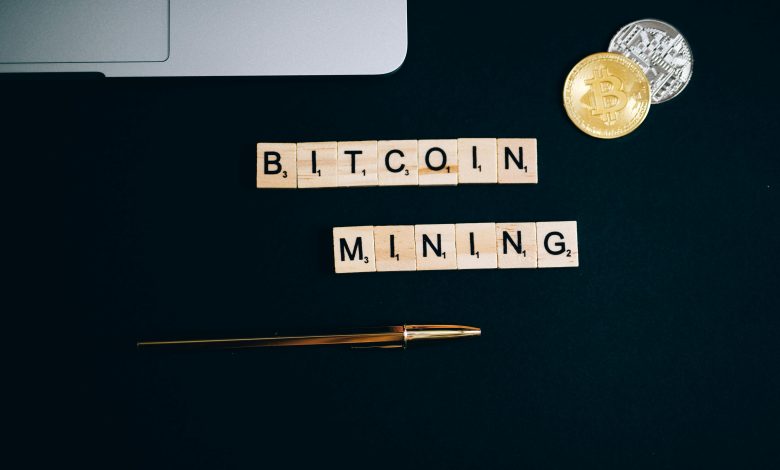What is Cryptocurrency Mining?
Unveiling the Mechanisms Behind Cryptocurrency Mining

Cryptocurrency mining has emerged as a crucial aspect of the digital currency ecosystem, playing a pivotal role in validating transactions and securing blockchain networks. In simple terms, it involves the process of verifying and adding transactions to a blockchain ledger, thereby creating new units of digital currency. But how does this intricate process work, and why is it essential in the realm of cryptocurrencies?
Understanding the Basics
Cryptocurrency mining is fundamentally the process by which transactions are verified and added to the public ledger, known as the blockchain. This decentralized ledger serves as the foundation for digital currencies like Bitcoin, Ethereum, and numerous others. Unlike traditional currencies that rely on centralized authorities such as banks to verify transactions, cryptocurrencies operate on a peer-to-peer network facilitated by miners.
How Cryptocurrency Mining Works
Miners utilize powerful computers or specialized hardware to perform these calculations, competing against each other to be the first to solve the puzzle. Upon successfully solving the puzzle, the miner broadcasts the solution to the network, and the proposed block of transactions is verified and added to the blockchain. Miners receive newly produced coins and transaction fees as payment for their labors.
Types of Cryptocurrency Mining
There are several methods of cryptocurrency mining, each with its unique characteristics and requirements. The two primary forms of mining are:
- Proof of Work (PoW)
Proof of Work is the traditional method of mining used by cryptocurrencies like Bitcoin. The first miner to solve the puzzle earns the right to add a new block of transactions to the blockchain and receives the associated rewards.
- Proof of Stake (PoS)
Proof of Stake operates differently from PoW, as it relies on validators rather than miners. This method is considered more energy-efficient and environmentally friendly compared to PoW.
Mining Equipment and Hardware
Successful cryptocurrency mining requires specialized equipment and hardware tailored to the mining process. These include:
Application-Specific Integrated Circuits (ASICs): Hardware that has been specially created and is intended to mine cryptocurrencies such as Bitcoin.
Graphics Processing Units (GPUs): High-performance GPUs are commonly used for mining altcoins and are more versatile than ASICs.
Mining Rigs: Dedicated computer systems equipped with multiple GPUs or ASICs for optimal mining efficiency.
Cryptocurrency Mining Pools.
Due to the increasing difficulty and competitiveness of cryptocurrency mining, many miners opt to join mining pools. Mining pools enable participants to combine their computational resources and increase their chances of successfully mining blocks. Rewards earned are then distributed among pool members based on their contribution.
Challenges and Risks in Cryptocurrency Mining
While cryptocurrency mining offers lucrative rewards, it is not without its challenges and risks. Some of the key issues include:
High Energy Consumption: The intensive computational requirements of mining contribute to significant energy consumption, raising concerns about environmental sustainability.
Cost of Equipment: Mining hardware can be expensive, and the ongoing maintenance costs can impact profitability.
Regulatory Uncertainty: The regulatory landscape surrounding cryptocurrency mining varies widely across jurisdictions, posing legal risks and compliance challenges for miners.
Environmental Impact of Mining
One of the most significant criticisms of cryptocurrency mining is its environmental impact. The energy-intensive nature of mining operations, particularly those using Proof of Work algorithms, has raised concerns about carbon emissions and sustainability. Efforts are underway to explore alternative mining methods that are more environmentally friendly, such as Proof of Stake.
Regulation and Legal Issues
The regulatory framework governing cryptocurrency mining continues to evolve, with governments worldwide grappling with how to address the growing industry. Some countries have embraced cryptocurrencies and mining activities, while others have imposed restrictions or outright bans. Compliance with tax laws, financial regulations, and environmental standards remains a priority for miners operating within legal jurisdictions.
Future Trends in Cryptocurrency Mining
As technology advances and blockchain networks continue to evolve, several trends are shaping the future of cryptocurrency mining:
Shift Towards Proof of Stake: Many cryptocurrencies are exploring or transitioning to Proof of Stake consensus mechanisms to address scalability and environmental concerns.
Decentralized Mining Pools: With more security and transparency than traditional centralized pools, decentralized mining pools are becoming more popular.
Integration of Renewable Energy: Mining operations are increasingly leveraging renewable energy sources to mitigate environmental impact and reduce operating costs.
Conclusion
Cryptocurrency mining plays a vital role in the decentralized ecosystem of digital currencies, enabling the verification of transactions and the security of blockchain networks. While it presents lucrative opportunities for miners, it also poses challenges such as environmental sustainability and regulatory uncertainty. As the industry continues to evolve, it is essential to adapt to emerging trends and technologies to ensure the long-term viability of cryptocurrency mining.
Unique FAQs
Is cryptocurrency mining profitable in 2024?
The cost of electricity, the value of cryptocurrencies, and the effectiveness of mining technology are some of the variables that affect how profitable it is to mine cryptocurrencies. While it can be profitable for some miners, others may struggle to cover their expenses.
How can I start cryptocurrency mining at home?
Starting cryptocurrency mining at home requires acquiring the necessary hardware, setting up mining software, and joining a mining pool for increased chances of success. However, it’s essential to consider factors such as electricity costs and regulatory compliance before diving into mining.
What are the environmental concerns associated with cryptocurrency mining?
The primary environmental concern with cryptocurrency mining stems from its high energy consumption, particularly in Proof of Work algorithms. This energy-intensive process contributes to carbon emissions and raises questions about the sustainability of mining operations.



